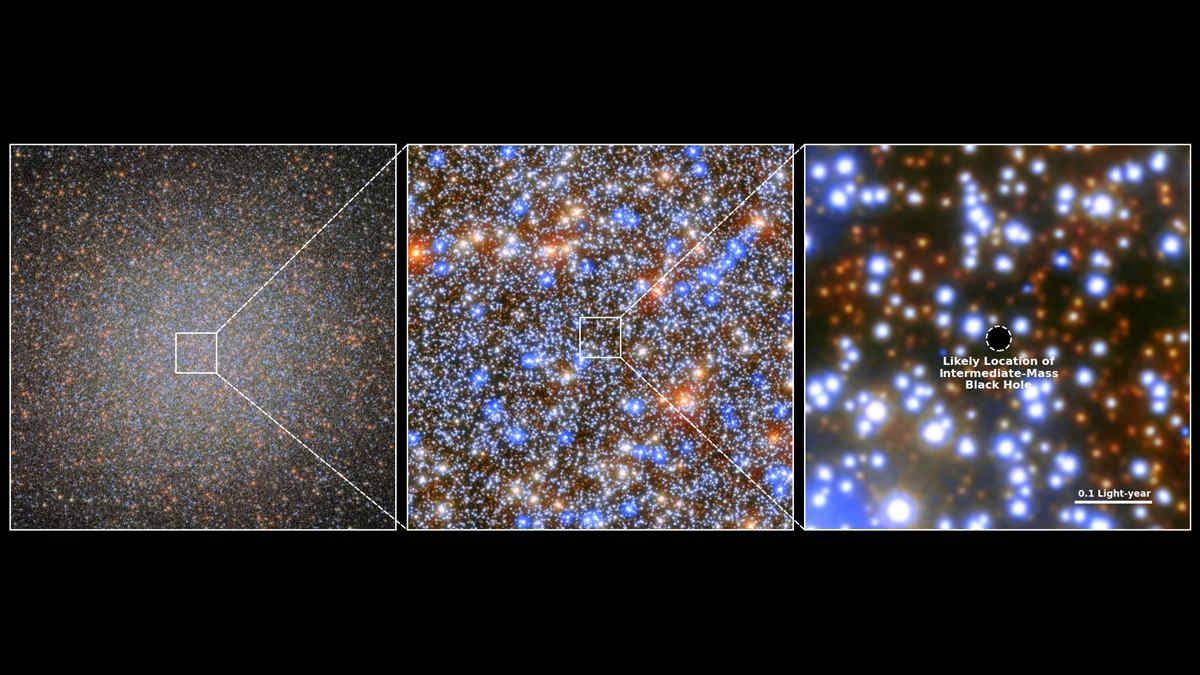You may be troubled to hear that astronomers have been able to confirm the nearest big black hole to our solar system. Don’t be. It’s far, far away.
Just how big is big when it comes to black holes anyway? Generally speaking, black holes come in 2 sizes: big or BIG.
The bigger ones are so big, they are referred to as “supermassive black holes.” These goliaths can be anywhere from hundreds of thousands to tens of billions of times the mass of our Sun. They are commonly found in the centres of galaxies.
All others are known as “stellar mass black holes” and are about 5–20 times larger than the Sun.
Astronomers have been puzzled for decades by the gap between the largest stellar mass black holes and the smallest supermassive black holes. Many believe there should now be a third group, and they are referring to this size as “intermediate mass black holes” (IMBH).
Now astronomers believe they’ve confirmed the existence of Earth’s nearest large black hole (one larger than a stellar-mass black hole). The interstellar object is believed to sit right in the middle of the IMBH range at an estimated 20,000 solar masses.
Their discovery is published in Nature.
The object was discovered at the centre of the neighbouring Omega Centauri star cluster about 18,000 light-years from Earth. It was found when an international team of researchers analysed a catalogue of 1.4 million stars using more than 500 Hubble Space Telescope images of the cluster.
“Identifying these stars was the smoking gun evidence we needed to prove the black hole’s existence, and we did,” says co-author Holger Baumgardt, an associate professor at the University of Queensland in Australia.
“When I saw the data, I immediately knew we found something special. Astronomers have tried to find one of these black holes for over 20 years, and now we have finally succeeded.”
It’s not the nearest black hole to be found, with evidence for others as close as 150 light-years away. But these are tiddling stellar mass black holes, making the newly discovered black hole the nearest large black hole confirmed.
The team was able to determine the black hole’s size by comparing the Hubble images with theoretical models for how massive objects should gravitationally interact.
“After an extensive analysis, we found that only an intermediate-mass black hole, about 20,000 times the mass of our sun, could produce the seven fast moving stars we were seeing,” Baumgardt says. “This class of black holes has been a theory for decades but is now fully confirmed to exist.”
“I think this will invigorate the field and lead to a lot of new research in this area,” he adds. “We can begin to speculate how this black hole formed, how it’s related to other massive black holes astronomers have found, and where other intermediate mass black holes might exist.”











/https://tf-cmsv2-smithsonianmag-media.s3.amazonaws.com/filer_public/34/31/3431771d-41e2-4f97-aed2-c5f1df5295da/gettyimages-1441066266_web.jpg)








Discussion about this post